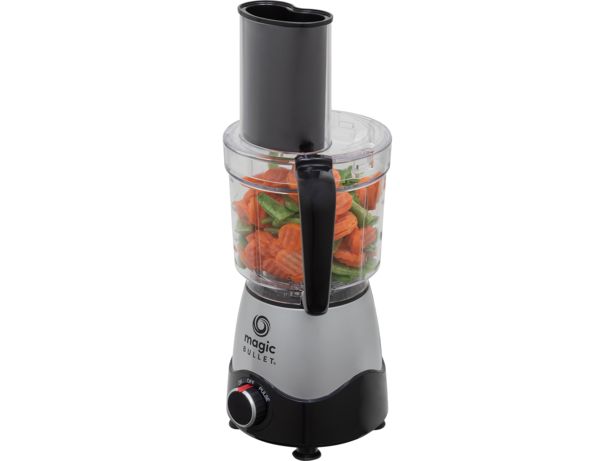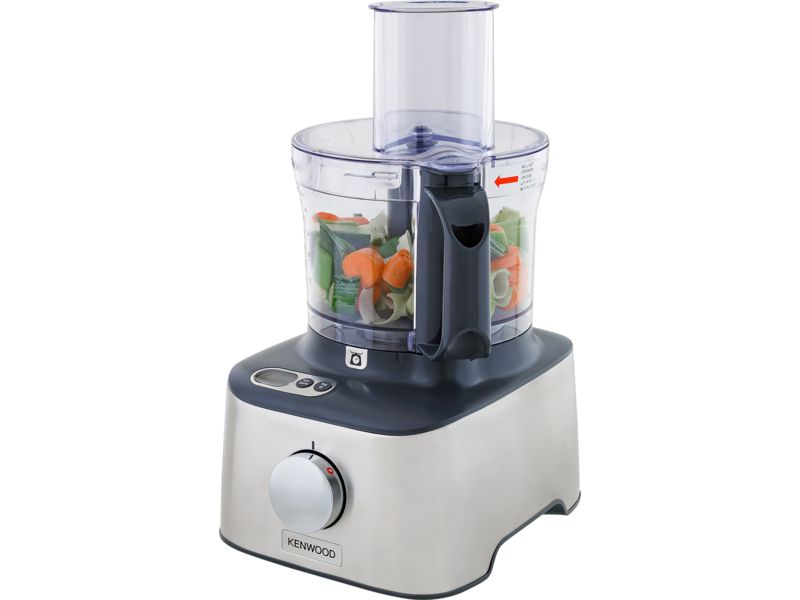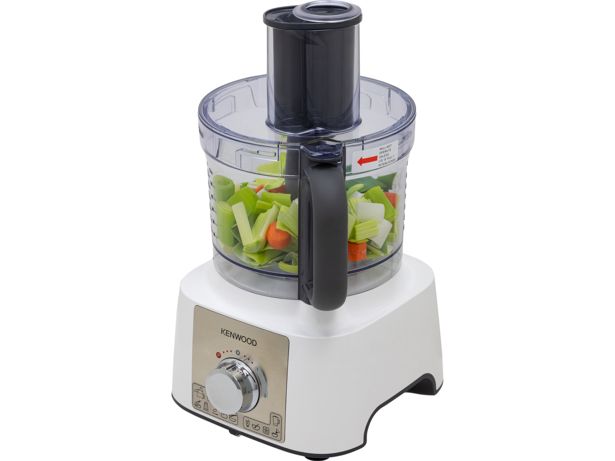By clicking a retailer link you consent to third-party cookies that track your onward journey. If you make a purchase, Which? will receive an affiliate commission, which supports our mission to be the UK's consumer champion.
Food processor, mixer or blender?

If you're tired of doing everything by hand in the kitchen, there are plenty of handy gadgets available to take the labour out of cooking and baking jobs.
You can spend anything from £5 to more than £400, and you'll find some products that are great all-rounders, while others excel at a particular task.
Discover the pros and cons of food processors, mini choppers, stand mixers, hand mixers, blenders and hand blenders to help you choose the best one for you.
Simply want to know the top scoring food prep products in our tests? Use our independent reviews to quickly find the best food mixer, best food processor or best blender for your budget.
Video: mixer, food processor or blender?
Get a quick rundown of what's what in our video:
Food prep gadgets and what they're for
- Food processors - geared towards chopping, slicing, grating and mixing. Good for adventurous cooks
- Mini choppers - basic, compact processors perfect for quick prep jobs and smaller quantities such as puréeing, chopping herbs or nuts.
- Stand mixers (also called food mixers or kitchen machines) - geared towards bakers, with a large mixing bowl and accessories for kneading, mixing and whisking
- Hand mixers - electric handheld mixer, smaller and cheaper option for light baking jobs
- Blenders - best for liquid blends such as soups and smoothies
- Hand blenders - handy for the odd blending, chopping or puréeing job if you’re short on space
Food processors
Good if you want a solid all-rounder and are an occasional, rather than frequent, baker
Pros:
- Can handle a range of cooking and baking prep tasks
- Quick to chop, slice or grate food
- Larger capacity
Cons:
- Can be expensive
- Some take up quite a lot of space
- Can be fiddly and time-consuming to set up and clean
Prices range from around £45 for a basic model up to more than £335. More expensive models usually have more accessories, more bowls or a larger capacity.
If you like preparing lots of fresh veg, sides or dips, a food processor can help whip through these jobs in seconds. However, the worst models won’t chop evenly and are a pain to set up. Head to our round-up of the best food processors to see our top picks for speedy and efficient chopping.
For more advice on choosing, see our full guide to the best food processors.
Mini choppers
Good if you’re short on kitchen space or only want to prepare small amounts of ingredients at a time
Pros:
- Compact and affordable
- Tend to be simple to use and clean
- Great for quick, small jobs
Cons:
- Usually limited to chopping and puréeing
- Small capacity
They can be a useful secondary gadget for small tasks where you don’t want to unpack your main food processor. Prices start from as little as £18, although you can pay up to £80 for the premium brands.
A good mini chopper will be quick and easy to use, but we’ve found that some work slowly and struggle to chop evenly.
Stand mixers
Best for regular bakers - these gadgets are geared towards mixing, kneading and whisking
Kneading, mixing and whisking are their key strengths, but some come with extra attachments for blending, grating, slicing and mincing food. Brands such as KitchenAid and Kenwood sell a wide range of accessories you can use with them, from ice-cream makers to spiralizers, although these can be expensive.
Pros:
- Great for baking
- Usually have a larger capacity than a food processor
- Some have extra attachments such as a blender jug
Cons:
- Tend to be limited to baking tasks
- Bulky
- Can be expensive
Stand mixers tend to be bigger and pricier than other food prep gadgets. Prices can range from £70 to £1,400, although they typically cost around £250. They can be a worthwhile investment for regular bakers, as they tend to do a better job of key baking tasks.
The best models take the effort out of heavy-duty baking jobs, but some stand mixers leave lots of ingredients unmixed and struggle with kneading dough. Check our round-up of the best stand mixers to get a model that will produce perfect patisserie.
See our full guide to the best stand mixers to get advice on which attachments you really need and how to choose the right model for you.
Hand mixers
Best for lighter jobs or occasional bakers
Handheld mixers usually have attachments for mixing, whisking and kneading and get the job done faster than you would by hand. They are a cheap and space-saving alternative to a stand mixer that you can use with any mixing bowl you have to hand.
Pros:
- Can cost as little as £12
- Small and easy to store
- Helps take the effort out of mixing and whisking
Cons:
- Can be tiring to hold
- May struggle with heavier or larger loads
A hand mixer may be all you need if you make the occasional sponge cake or want to whip cream every so often. There are some premium models available, with extra attachments and a stylish metal exterior, but these can be more cumbersome to hold for longer jobs.
Blenders
Best for whipping up smoothies and soups
The best blenders can quickly blitz smoothies and soups to a smooth consistency. Most can also crush ice and make dips, and some come with additional blades or mills for grinding and milling things like coffee, nuts and spices.
Pros:
- Great for liquid blends
- More compact than a food processor
- Some convert into an on-the-go drinking cup
Cons:
- Usually no option to chop, slice, whisk or knead
- Can be noisy
They tend to cost between £20 and £150 – although pricey premium models from big brands such as KitchenAid, Nutribullet and Sage can cost several hundred pounds.
Some have a larger jug for blending bigger amounts, while others have a compact blending cup that converts into a travel mug and makes one or two portions.
Find out which blenders whip up consistently smooth soups and smoothies, and which ones struggle to blend all the ingredients, in our round-up of the best blenders.
For more advice on choosing the most suitable option for you, see our full guide to the best blenders.
Hand blenders
Good if you're short on space but want to make the occasional soup, smoothie or dip
Pros:
- Small enough to fit in a drawer
- Can be used for different quantities
- Some come with a wide range of attachments
Cons:
- Can be uncomfortable to hold for big prep jobs
- Some splatter food
- Can have short maximum running times
Prices range from £10 to more than £145. Pricier models may come with extra accessories, such as a beaker for blending smoothies, specialised blending feet for mashing potato, a food processing bowl or a balloon whisk for whipping. The most expensive may be cordless or have a wider range of blending speeds to choose from.
Hand blenders can be heavy and tiring to use, and some can only be used for 10 seconds at a time, so they aren’t always ideal for heavy-duty jobs. You’ll also have to be careful that food doesn’t splash out onto your worktop.
Find out which models we recommend you buy, and the ones to avoid, in our reviews of the best hand blenders.
Which? kitchen gadget reviews
There are plenty of different gadgets to choose from. What's right for you depends on your budget, what you like to cook, and how much space you have. If you're keen to take your cooking to the next level, make sure you've also got a top-notch built-in oven, as we've found that some models have unreliable temperature controls that could spell the end for your soufflés.
We buy everything we test, and our reviews are completely independent, so you know you're getting the unbiased, impartial truth about how popular products compare.best



